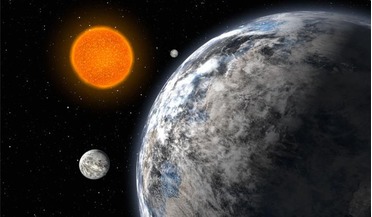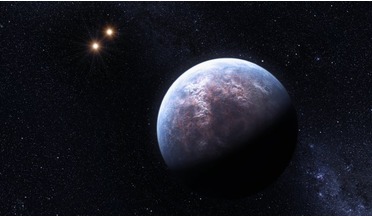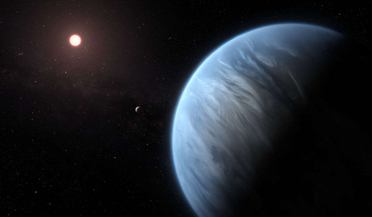 18 April 2016
New Earth-like planet found in GJ 832 planetary system
18 April 2016
New Earth-like planet found in GJ 832 planetary system
... worlds similar to our own, researchers from Texas and Germany have used a statistical approach to infer that an Earth-like planet is residing in the habitable zone of GJ 832, a planetary system that is already known to harbour two...
 17 June 2020
Six billion Earth-like planets could be in our galaxy, new study says
17 June 2020
Six billion Earth-like planets could be in our galaxy, new study says
... may have Earth-like planets in our Galaxy." Previous estimates of the frequency of Earth-like planets range from roughly 0.02 potentially habitable planets per Sun-like star, to more than one per Sun-like star. Typically, planets like Earth are more...
 09 February 2018
New research on rocky worlds helps identify Earth-like planets
09 February 2018
New research on rocky worlds helps identify Earth-like planets
... measurements have been made for so far, astronomers have noticed that planets with a radii greater than about 1.7 times that of Earth have gassy envelopes, like Neptune, while those with radii smaller than this are rocky...
 November 2020
The alien hunter’s field manual
November 2020
The alien hunter’s field manual
... test for multicellularity and technosignatures as well. OST and HabEx would be able to characterise one to two dozen Earth-like planets, depending on their final designs, and LUVOIR could characterise as many as 100. Beyond that, even more radical...
 16 April 2021
Five double star systems potentially suitable for life identified by researchers
16 April 2021
Five double star systems potentially suitable for life identified by researchers
... the eccentricity (i.e. degree of ellipticity of the orbit), semi-major axis, and period of the hypothetical Earth-like planet's orbit. The team also looked at the "climate inertia" of a hypothetical exoplanet. “Climate inertia" is the speed at which...
 05 October 2020
A dozen "superhabitable" planets better than Earth identified in new study
05 October 2020
A dozen "superhabitable" planets better than Earth identified in new study
... for follow-up observations in search of extrasolar life than the most Earth-like planets,” the authors state. It should be noted that habitability does not mean these planets definitely have life, merely the conditions that would be conducive...